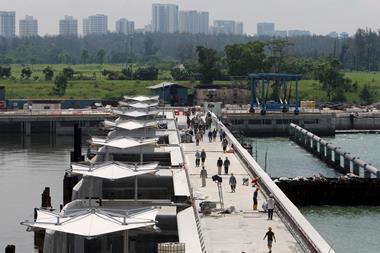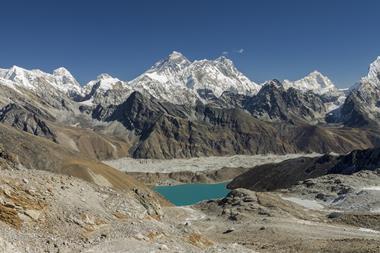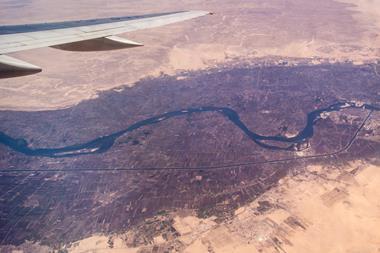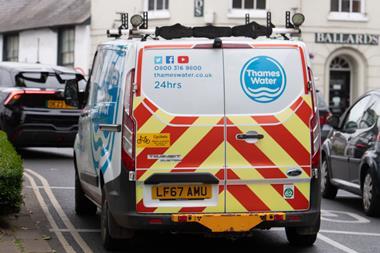While improving access and water quality are crucial, optimising existing resources and building climate resilience are equally vital, writes Catherine Cahill
It’s the ultimate contradiction: water is invaluable, but it’s free. Without water, manufacturing stops, food doesn’t grow, the economy crashes, and ultimately, life ceases. It is a tough concept to get your mind around but think about it – when we pay for water, with few exceptions, we are paying for the treatment and transport of it; the water itself is free.

Only in its absence or scarcity does this value-price contradiction become readily apparent. As Benjamin Franklin put it, “when the well is dry, we know the worth of water.”
With its value only appreciated in its absence, the value is perhaps not in the clean water itself but in the people and organisations assuring its reliable supply; in other words, the value is in the value chain.
This value chain requires major investment to serve a growing global population, increased industrialisation, continued urban migration, changing consumer demands, and to address contaminants.
A large part of the investment is simply to fix what breaks, and it is unfortunately, breaking at an increasing rate due to age, manifested climate change, and land subsidence.
To value water properly and address the issue of scarcity, we as a society must invest in it with sustainable solutions.
So what solutions are out there that can contribute to tackling the issue of water scarcity?
Improving access and water quality are probably the most obvious, but optimising and using existing resources better, and building climate resilience with strategies that protect resources in the face of emergencies, are equally important.
‘Smart water’ has been a buzz phrase in the water industry for some time now and momentum has been building more recently.
Smart water services are about improving the efficiency of water management for the benefit of cities and communities by leveraging technology and data analysis.
Water companies are actively overlaying and connecting their analytics on plumbing, hydrants, pumps, meters, boilers, water treatment technologies, and irrigation equipment.
Remote monitoring through sensors and controls helps with predictive maintenance and pre-emptive alerting, which can lower costs, reduce water usage, decrease down-time and improve service reliability to the end user.
A good example of smart water solutions at play is in the agriculture world, with 70% of the freshwater we use devoted to agriculture. Intelligent watering devices can facilitate remote crop management and help growers maximise yields, providing them with monitoring and analysis of thousands of data points in real time such as soil moisture content and weather patterns, enabling them to better apply chemicals and fertilisers, and manage their crops.
Jumping from the farming world to the utility world, advances in technologies like AI and the integration of multiple solutions into common decision support systems provides opportunities to deepen customer relationships and address utility and industry pain points.
The real-time monitoring of key indicators throughout the water cycle eg pressure and flow rates, can effectively reduce ‘non-revenue water’ (leakage) and increase cost savings through the optimisation of asset availability and extending asset life.
The challenge of water scarcity is real, as is the need for commitment and investment from all stakeholders, from government to regulators, to the private sector.
Post COVID, government stimulus packages have been both meaningful and encouraging as an expression of intent. The Infrastructure, Investment and Jobs Act in the US allocated more than $100bn to expand access to clean drinking water and to promote climate change resilience efforts.
This is a step-up on targeted water infrastructure-related spending versus prior stimulus packages and has started to make its way into the order books of the engineering and construction companies, which tend to be involved at the early-stage planning, in the design and engineering of water reuse and wastewater treatment plants.
Once the plants are built, the water-related equipment gets installed – pumps, valves, fire suppression systems, drainage systems and the like – followed then by the treatment-related technologies, providing opportunities for companies down the value chain.
Brazil announced the Universal Sanitation Act at the end of 2021, committing to universal sanitation for all by 2033; that will require investments in the range of approximately $90bn-$130bn over that period.
To achieve this goal, the Act includes a framework which encourages private market participation and funding. Finally, less stimulus-related and more regulatory-driven, the UK is on the cusp of a new five-year regulatory cycle, which will see spending to address issues like river health, leakage and sewer overflow incidents, double when compared with the last five years, driving opportunities across utilities, infrastructure and technology companies over multiple years.
From our vantage point, as a Water portfolio manager, investing in companies across the value chain, ensuring the reliable provision of clean water, the value chain continues to strengthen.
Water companies are adopting technologies that target water scarcity, enhance sustainability and improve the customer experience.
They are rising to the challenge, offering more innovative solutions, with the increasing support of key stakeholders in the background.


















